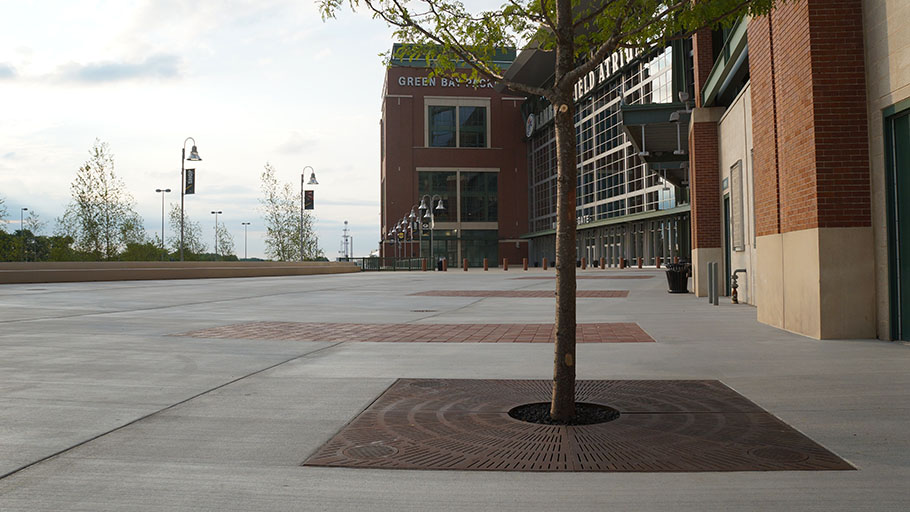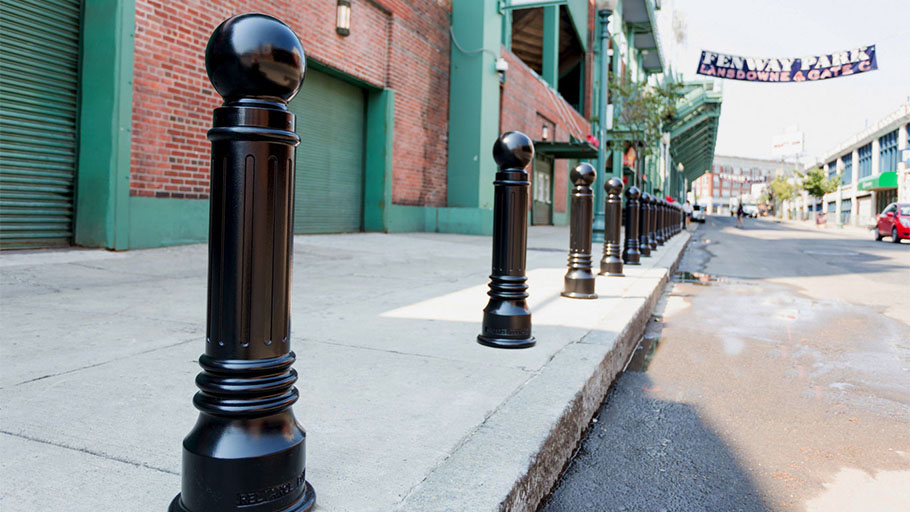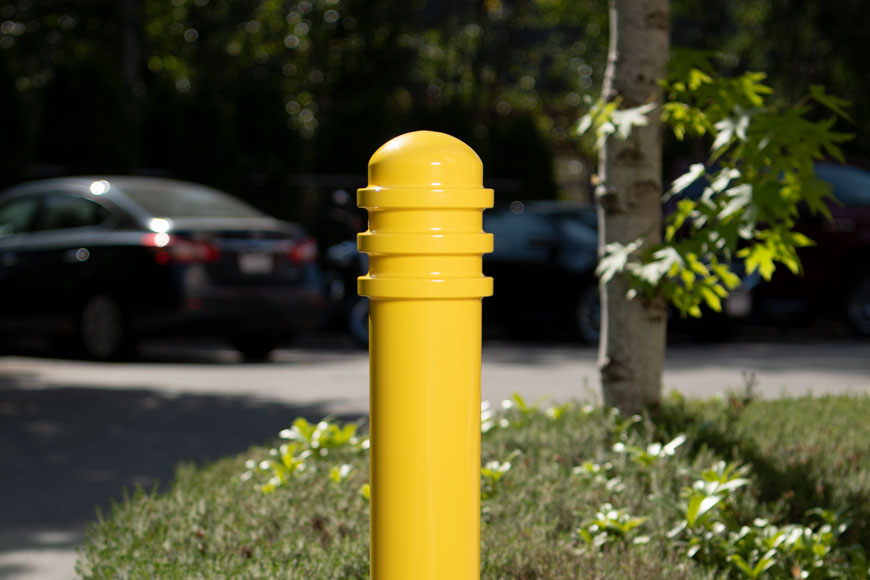Adaptable barriers between vehicles and pedestrians
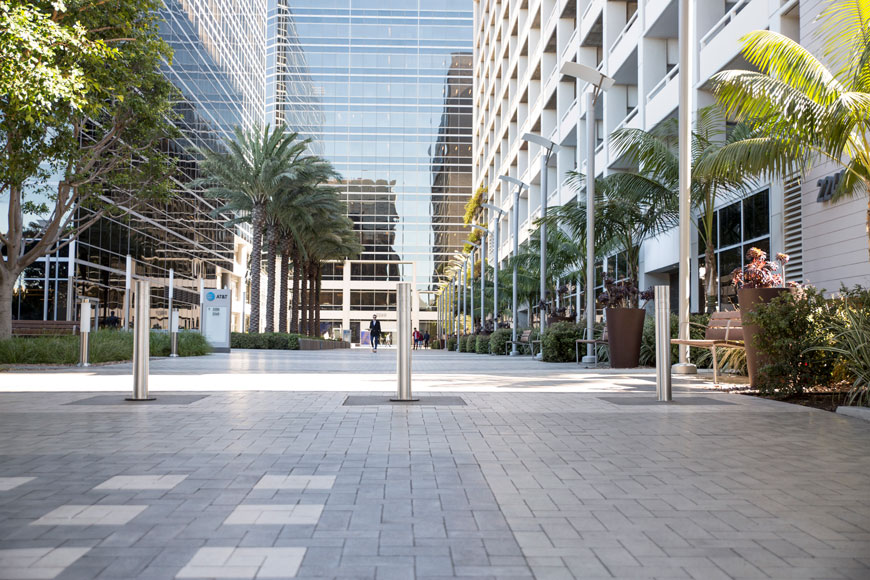
What is physical access control?
Physical access control is the selective restriction of access to space.
The simplest and most common example is a locking door. You can walk through unimpeded while it is open, but you can’t pass once its locked. Fob controlled gates, RFID doors, and password-restricted IT systems all operate on the same general principle.
In traffic management, physical access control systems allow spaces to switch between pedestrian and vehicle use.
Vehicular use in pedestrian spaces
Public parks, walkways, and plazas are pedestrian only spaces, but there is a long list of special vehicles that require access: ambulances, fire trucks, police, maintenance vehicles, construction crews, and any number of other necessary services.
The reverse is true for roads and parking lots. They are normally vehicle-dominated spaces, but sometimes they are adapted for pedestrian use. Some roads are open to vehicle traffic during the week and become pedestrian on weekends and during special events.
In either case, an access control measure helps control which users have access to a physical space over time.
Comparing access control measures
Adaptable access control measures provide a smooth transition between restriction and access. Ease of transition needs to be balanced with security. Sturdier, more secure measures usually require more work to move.
When evaluating access control measures, a site manager needs to consider expense, ease of installation, removal and storage requirements, aesthetics, and variability. How frequently do the access requirements change? Only in emergencies? Several times per day? The answers to those questions inform the choice of access control for a given locale.
Concrete barriers
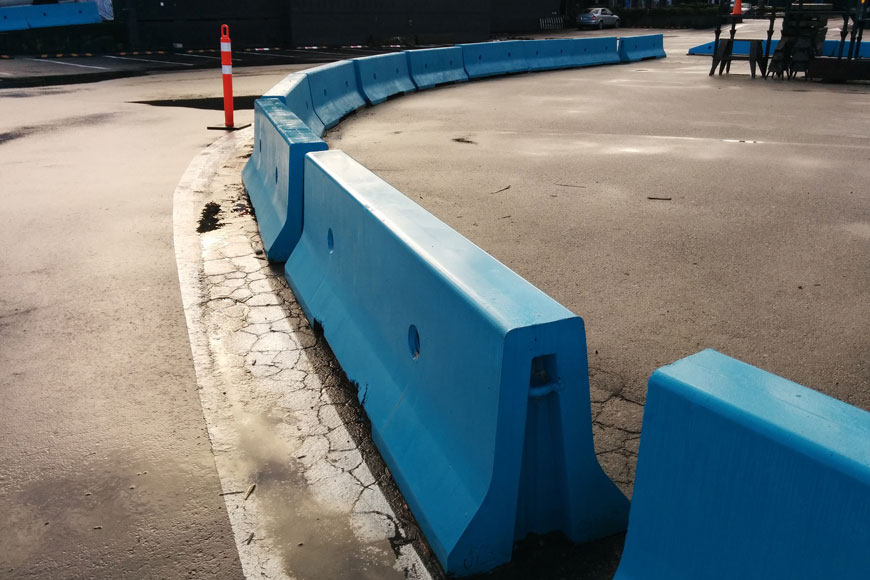
Features
Impact resistance: High
Adaptability (allowing variable access): Low
Storage needs: High
Aesthetics: Poor
Installation: Easy (at grade)
The weight of concrete barriers makes them ideal for creating safety in high-traffic areas. They are often used to create an impact-resistant barrier along a stretch of roadway, creating a wall that separates users. Generally, they are placed for longer stretches of time, such as in the division of lanes on a highway, or for a shorter but still substantial period, such as when they are used as protection for road workers during a construction project. Concrete barriers are better as a wall than as a door (opening and closing for short periods) because of their substance. Unlike a wall’s footings, however, the concrete or jersey barrier can simply be placed at grade. They are constructed in short segments so they can be used to create curving barriers though each segment is straight.
One notable exception to their permanence is when they are used with the barrier transfer machine, colloquially known as a “traffic zipper.” These machines pick up, move, and replace concrete lane separators several times a day, reversing the flow of a lane to respond to rush hour and other traffic conditions.
Yet even this dynamic and moving use of concrete barriers still does not cause them to work like a door. It is more like rebuilding a wall. In general, concrete barriers are a long-term solution for blocking physical access to an area. They are usually used in more industrial areas, since they are often unsightly—a necessary but unattractive element of the concrete jungle.
Water-filled plastic barriers
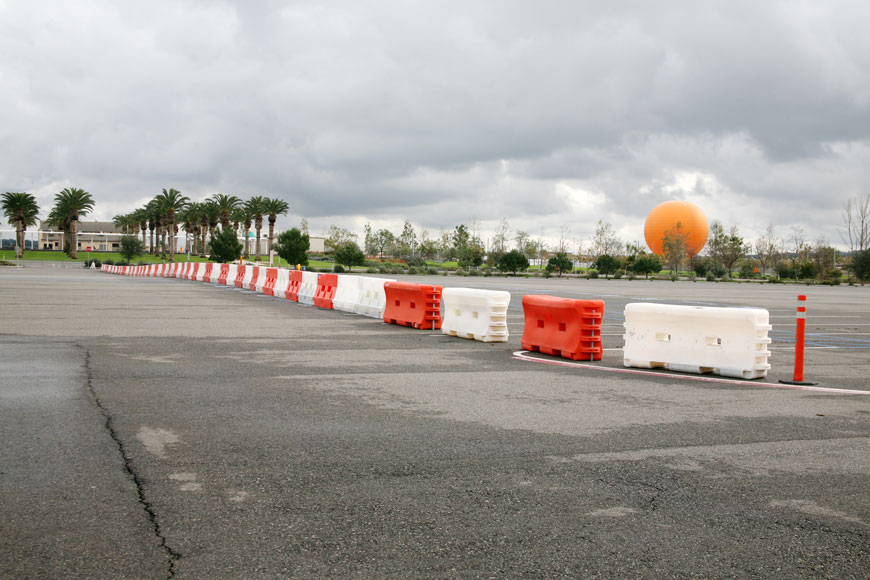
Features
Impact resistance: Medium
Adaptability: Low
Storage needs: High
Aesthetics: Poor
Installation: Medium (at grade, must be filled with water)
Water-filled plastic barriers are frequently used to transform roadways into pedestrian spaces or temporary work zones. They are more portable than concrete barriers, only taking on their full weight after being filled with water (or occasionally sand). Due to the intensive effort required for their set up and take down, plastic barriers are usually reserved for one-off events where a long-term solution isn’t practical, and then only when security trumps adaptability.
These barriers usually represent a sudden change in traffic pattern. For that reason, they are often created in high-visibility colors reminiscent of a construction-zone, and are designed to stand out, rather than complement or blend in.
Removable bollards
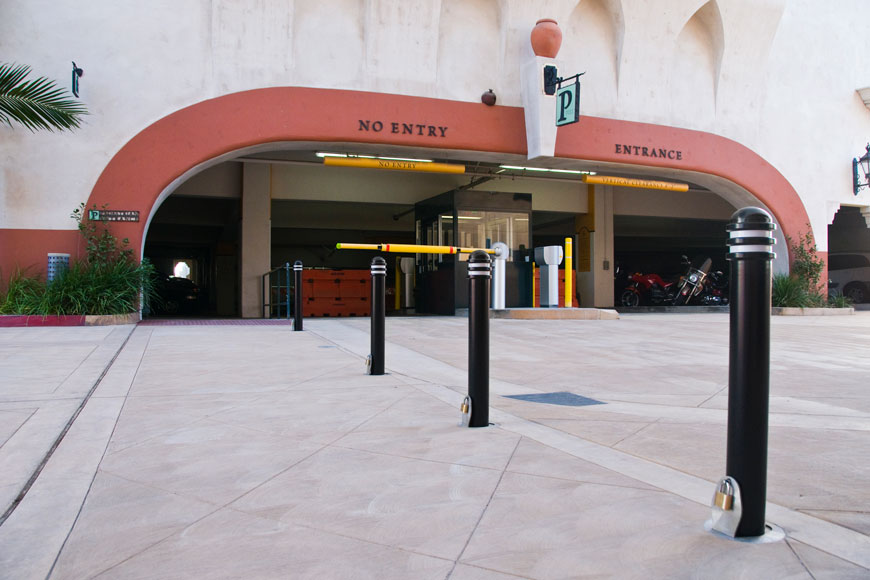
Features
Impact resistance: Low
Adaptability: Medium
Storage needs: Medium
Aesthetics: Excellent (wide range including decorative available)
Installation: Medium (below grade anchor)
Removable bollards are an economical solution for areas that require long-term access control. Bollard posts allow pedestrians and cyclists through unimpeded, but act as an effective barrier to vehicle traffic. Their simplicity and usefulness make bollards a popular choice for park entrances and building plazas.
When a vehicle requires access, anyone with the correct key can unlock the post from its concrete-embedded anchor. Moving a bollard is many times easier than taking down a barrier, but it’s still not especially convenient. The mover needs to unlock the post, pick it up, and walk it to the designated storage area. When it’s time to reinstate the barrier, the process is repeated in reverse.
Removable bollards are perfect for areas that need occasional vehicle access. They are available in a very wide range of decorative options, so can be chosen to enhance the look of the streetscape.
Retractable bollards
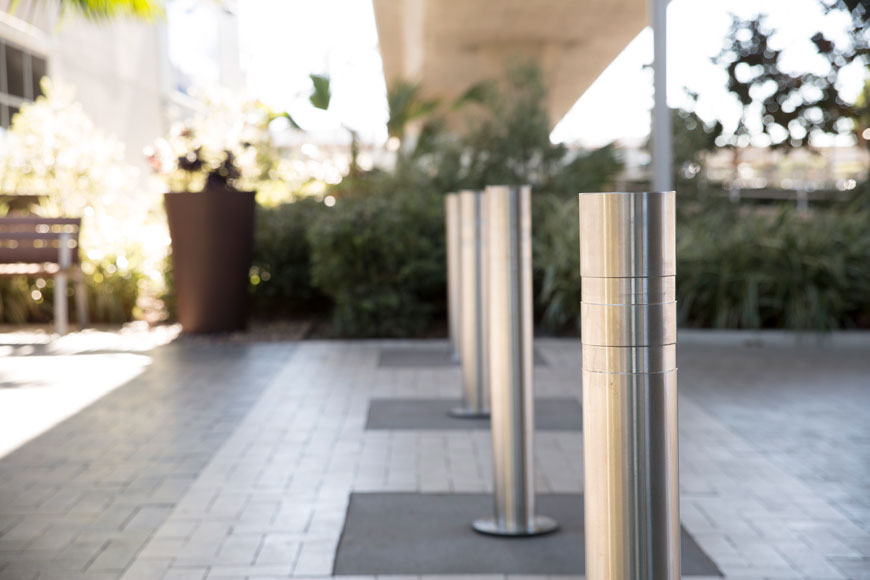
Features
Impact resistance: Medium
Adaptability: Medium
Storage needs: Low (self-store)
Aesthetics: Good (attractive but limited options)
Installation: Medium (below-grade receptacle)
Retractable bollards are similar to removable bollards, with the added benefit of being self-storing. Instead of detaching from an embedded anchor, retractable bollards lower into a ground receiver—there is no need to move or store a heavy post.
The reduction in heavy lifting and transport make retractable bollards an appealing option in areas that require routine transitions between vehicle restriction and access.
Most bollard receivers sit flush with the surface to eliminate any tripping hazard while they are in the “down” position.
Retractable bollards must be able to slide into the receiver and so have more limited profile options than removable bollards, but still are available in a range of colors and sizes to suit their location.
Collapsible bollards
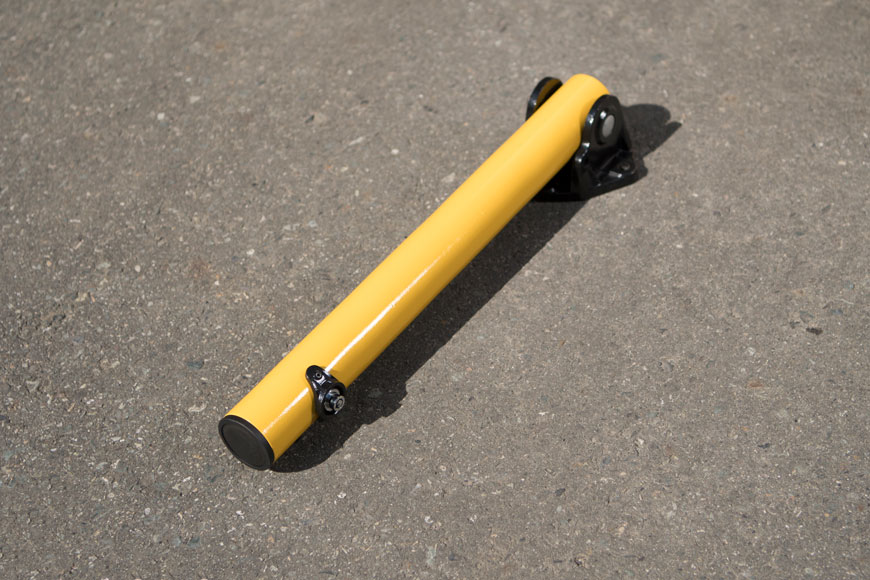
Features
Impact resistance: Low
Adaptability: Medium
Storage needs: Low (self-store)
Aesthetics: Medium
Installation: Easy (at grade)
Collapsible bollards fold down for rapid vehicle access. They can be locked in the upright position or left unsecured for rapid emergency response.
Because the bollard lies across the ground in the down position, lowered vehicles may not have the necessary clearance to pass over them.
Collapsible bollards are best for short-term vehicle access for emergencies and deliveries. They aren’t recommended for busy pedestrian areas, as the collapsed post poses a tripping hazard.
Automated Retractable bollards
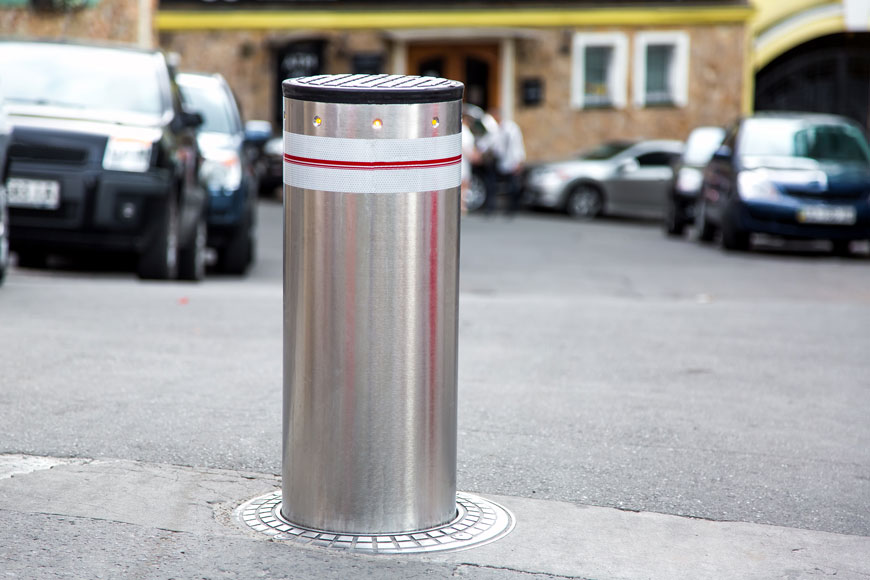
Features
Impact resistance: High
Adaptability: Very high
Storage needs: Low (self-store)
Aesthetics: Good (attractive but limited options)
Installation: Very difficult (below grade receptacle, hydraulics, electrical, networked)
Automated retractable bollards can be directed to raise and lower by a remote computer system. They are very secure, and almost invisible when in the “down” position.
The initial installation cost for automated bollards is high, but they are a solution for high traffic areas with very frequent changes in access like in places where access is given on a per-vehicle level. They are commonly used in Europe to block bus-only lanes, for example, lowering and raising automatically for that vehicle class. A transition that may have taken several minutes with a removable bollard can be accomplished in seconds, allowing the bollard to be part of the flow of a busy street.
Options for variable outdoor physical access control
Access to spaces can be constrained with fences and walls, but these permanent solutions can be too restrictive in a landscape. Constraint can be offered in more adaptable ways through temporary barriers and bollards. The best approach for an application will be found by considering the budget, needed variance, impact resistance, storage, installation and aesthetics.








